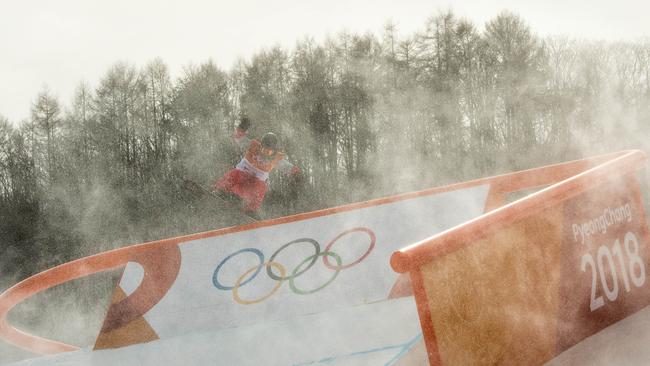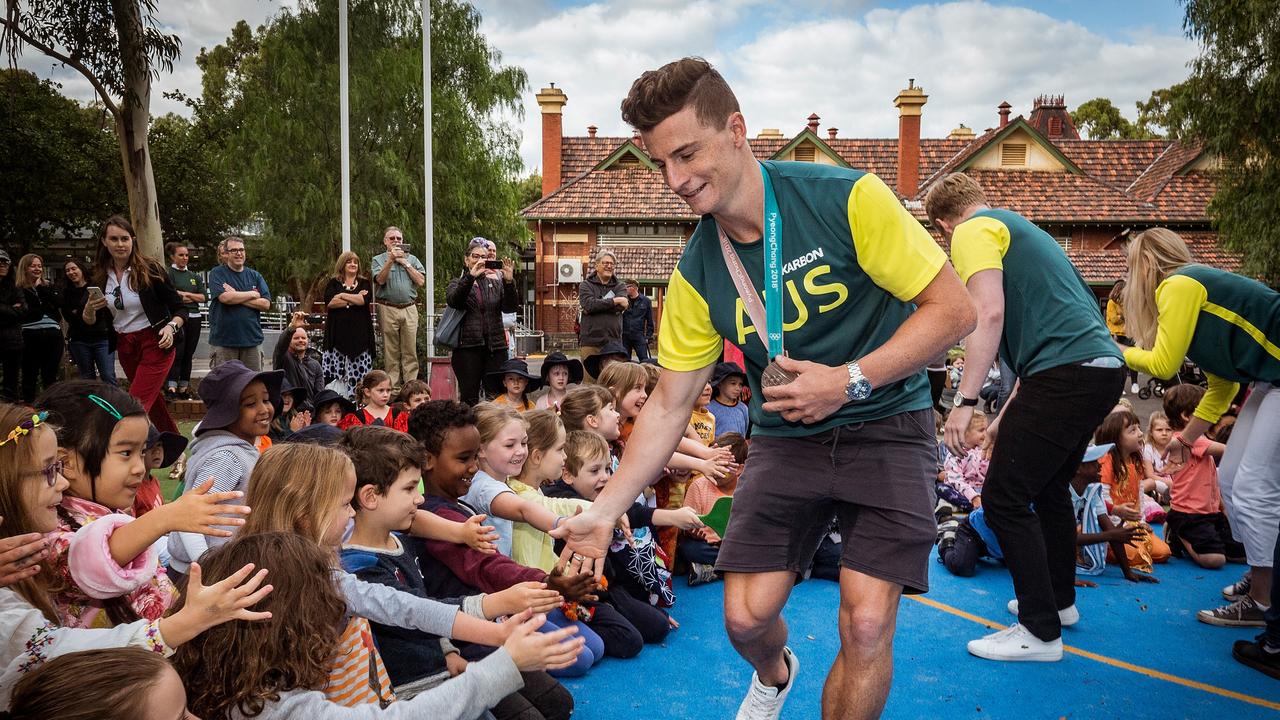Winter Olympics: Australia’s medal chances blowing in the wind
Australia’s Winter Olympics chances are blowing in the breeze at Bokwang — literally.

Australia’s Winter Olympics chances are blowing in the breeze at Bokwang — literally.
Australia’s youngest team competitor, 17-year-old Tess Coady, was ruled out of the Olympics yesterday after a disastrous warm-up for the women’s slopestyle, when a blast of frigid wind caught her off guard while she was mid-air on the last practice jump.
Australian chef de mission Ian Chesterman has called on world skiing officials to review the Bokwang events, particularly the women’s aerials events, which start on Thursday, after Australians were “blown all over the course’’ in training yesterday. He also criticised the fact that the slopestyle competitors were allowed to warm up where Coady was injured, but the event was then cancelled because the wind picked up even more.
Last night Games officials announced they would hold a straight finals competition today.
The blue riband event, the men’s downhill, scheduled at another mountain in Jeongseon, was postponed until Thursday because the wind was making the competitors’ access via a gondola too dangerous.
Coady, weighing just 55kg, went high on the final jump of her first warm-up run but was caught out by a huge blast of Siberian air, throwing her off balance and causing an awkward landing on her left knee.
Team doctor Peter Braun was called to assess the severity of the injury and, alongside the team physiotherapist, ruled her out of the Games with a ruptured anterior cruciate ligament.
Chesterman said: “This is the biggest setback in her sport and she’s very upset.”
He said Coady was being comforted by teammates and taking solace from aerial skier Lydia Lassila, who ruptured her ACL at the Turin Olympics and came back four years later to win gold.
“I am extremely disappointed with injuring my knee before I had the chance to compete,” Coady said. “It’s a very difficult time but I’m getting great support from the medical team and my teammates. I’m going to work hard to come back even better in the future.”
Officials on the slopestyle course told The Australian the conditions were very cold — around -14C but with -27C windchill — and competitors had been getting “quite frozen’’ on the chairlift to the top of the course. Winds were up to 75km/h.
The unpredictable weather is not to Australia’s liking, especially as other Australian women’s aerial competitors later in the week, also at Bokwang, are particularly light in weight.
Chesterman said: “Wind is the enemy of winter sport. It makes the winter sports even more difficult.
“In aerials it has its greatest impact. While part of the Games is dealing with the elements, it should also be so that real skill is on display.’’
He encouraged the national ski federation to take up the safety issue with the world body FIS.
Yesterday even men’s competitor David Morris abandoned plans to try his latest trick , the notoriously difficult quintuple, because the conditions were changing so rapidly.
One of Australia’s aerials medal contenders, Danielle Scott, was badly thrown around by the wind gusts during the Olympic test event at Bokwang last year, finishing out of the medals.
Even five-time Olympian Lassila battled those conditions at the test event.
Moguls coach Steve Desovitch said the wind was a factor even on the moguls course.




To join the conversation, please log in. Don't have an account? Register
Join the conversation, you are commenting as Logout